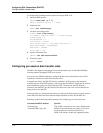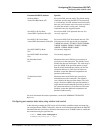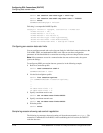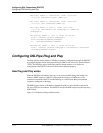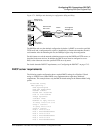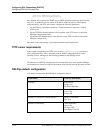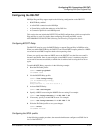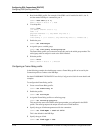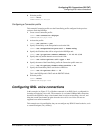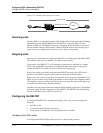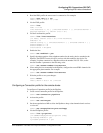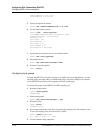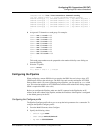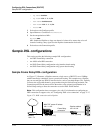
17-16 Preliminary May 9, 2000 APX 8000/MAX TNT/DSLTNT Physical Interface Configuration Guide
Configuring DSL Connections (DSLTNT)
Configuring DSLPipe Plug and Play
1 Read in the SDSL profile. For example, if the SDSL card is installed in shelf 1, slot 11,
and the remote DSLPipe is connected to port 1:
admin> read sdsl {1 3 1}
SDSL/{ shelf-1 slot-3 1 } read
2 List the profile:
admin> list
[in SDSL/{ shelf-1 slot-3 1 }]
name = ""
physical-address* = { any-shelf any-slot 0 }
enabled = no
line-config = { 0 1 static { any-shelf any-slot 0 } 144000 coe }
3 Enable the port:
admin> set enabled=yes
4 Assign this port to a nailed group:
admin> set line-config nailed-group=101
The Frame Relay profile you create next locates this port by the nailed group number. The
nailed group must be unique for each active WAN interface.
5 Write the profile:
admin> write
SDSL/{ shelf-1 slot-3 1 } written
Configuring a Frame Relay profile
In the following example, the administrator creates a Frame Relay profile to be used by the
Connection profile to connect to the DSLPipe:
See the APX 8000/MAX TNT/DSLTNT Frame Relay Configuration Guide for more details and
examples.
To configure the Frame Relay profile:
1 Create a new Frame Relay profile:
admin> new frame-relay fr
2 Enable the profile:
admin> set active=yes
3 Assign the Frame Relay profile to a nailed-up group:
admin> set nailed-up-group=101
This must be the same as the SDSL nailed group number you configured in the SDSL
profile. The nailed group must be unique for each active WAN interface.
4 Specify the type of link management used for the connection:
admin> set link-mgmt = ansi-t1.617d
This is the default for the DSLPipe.
5 Specify the type of link:
admin> set link-type = dce



